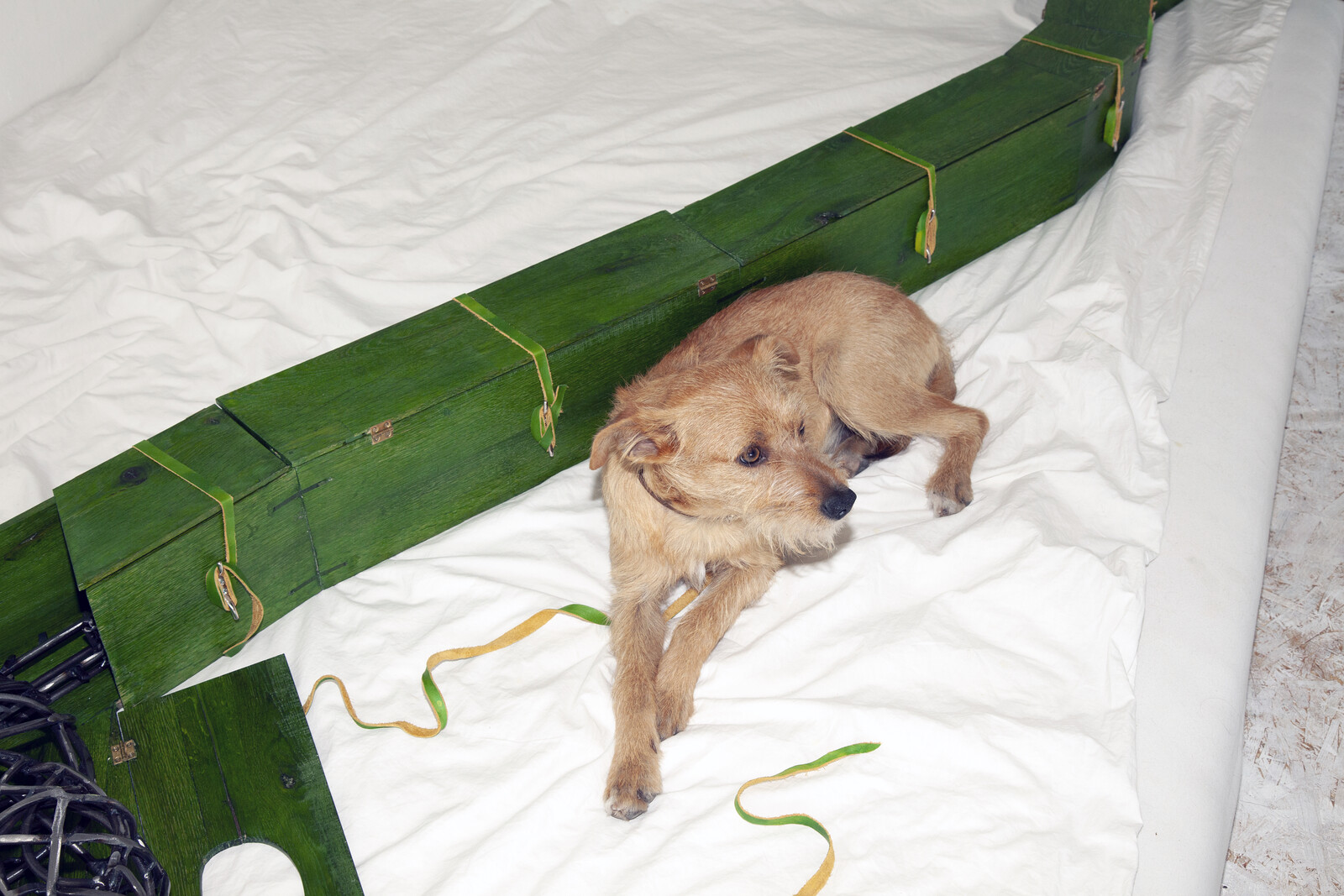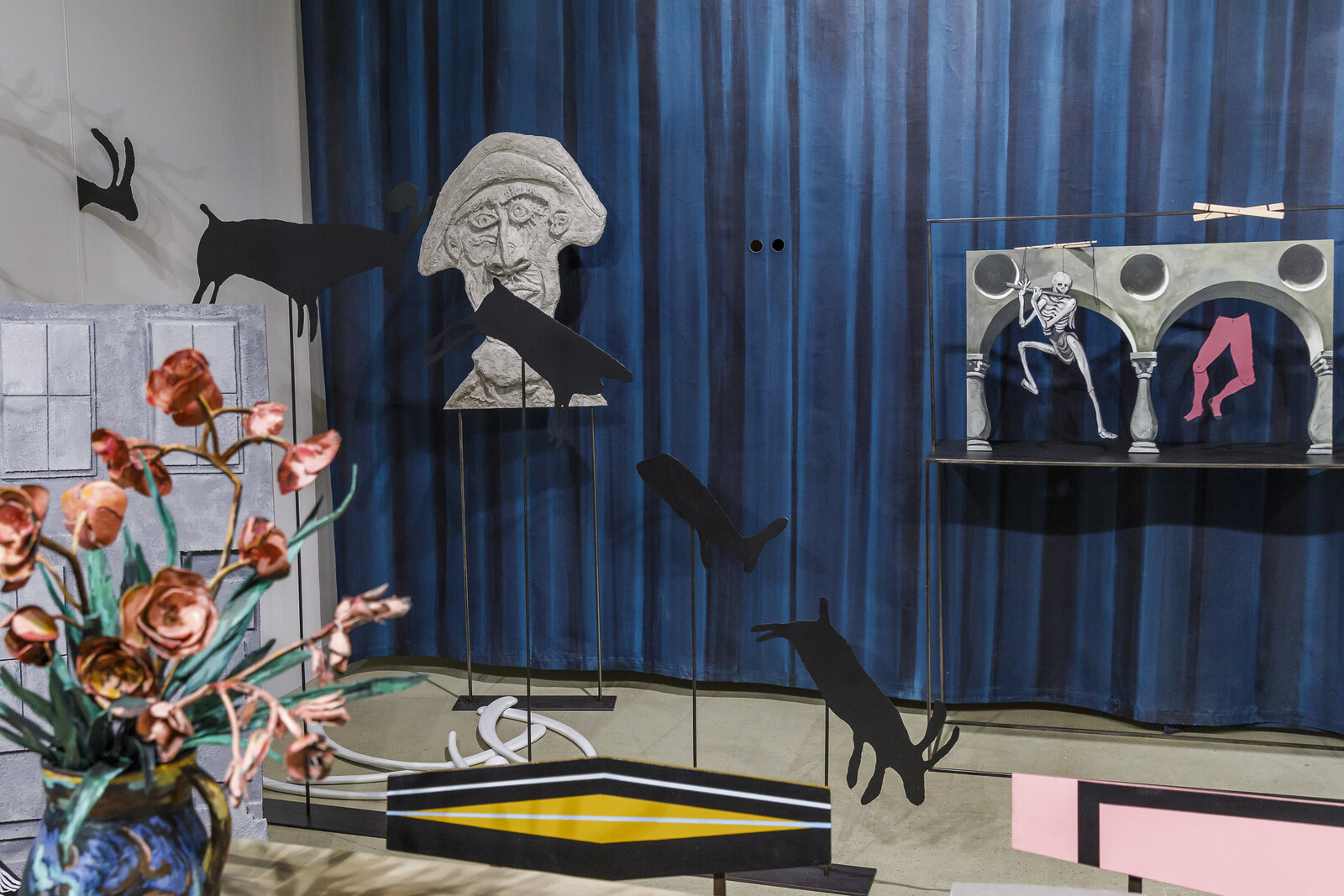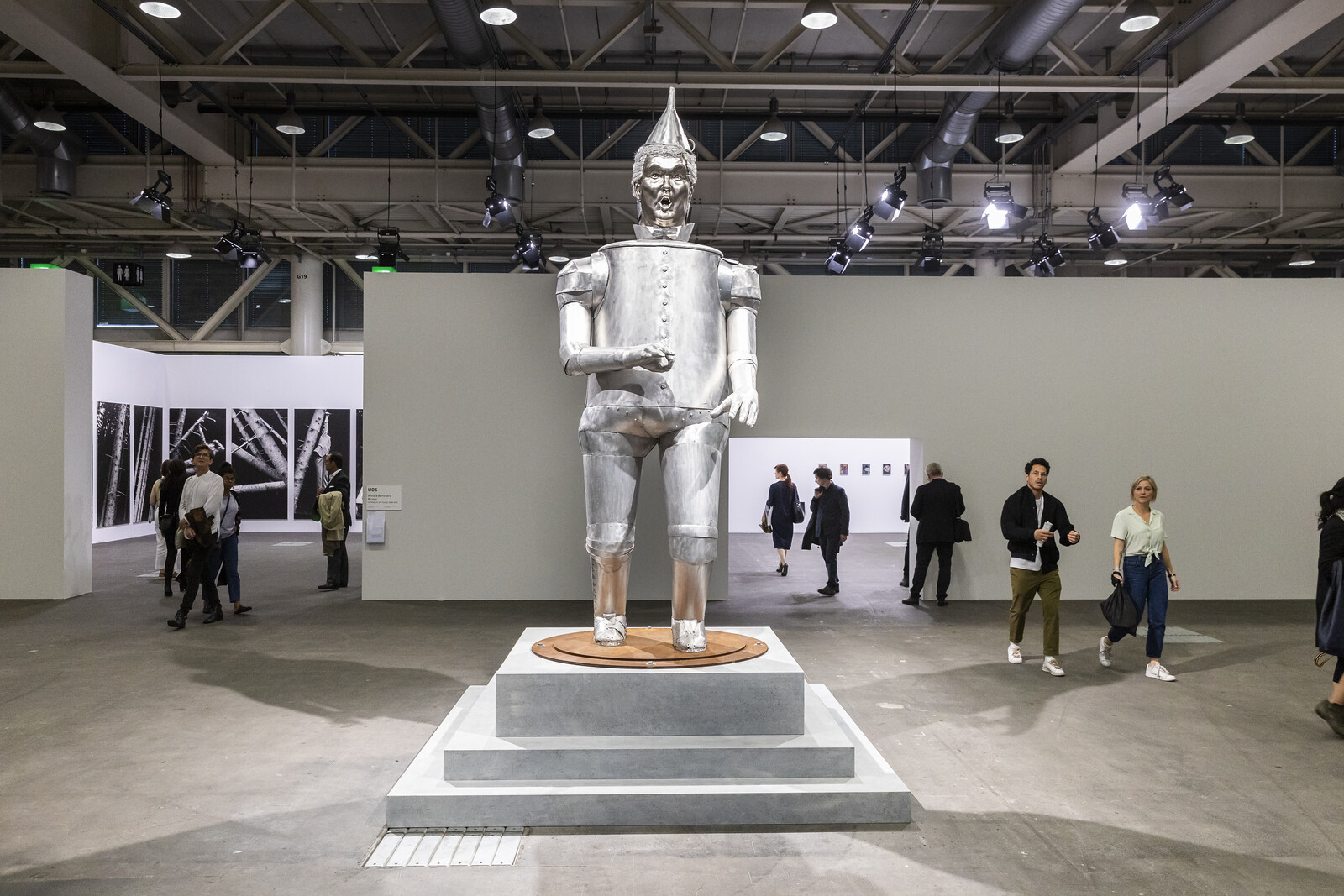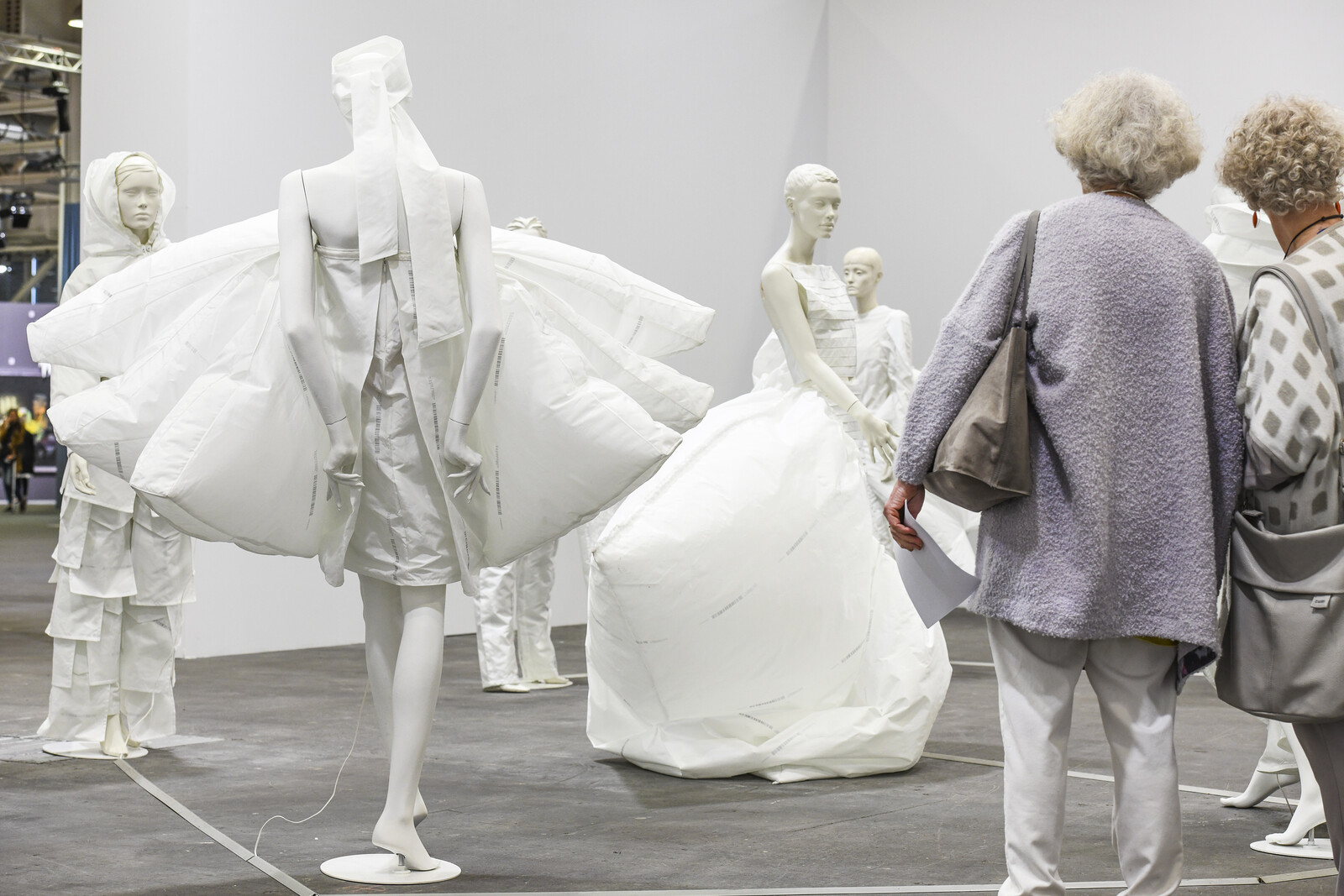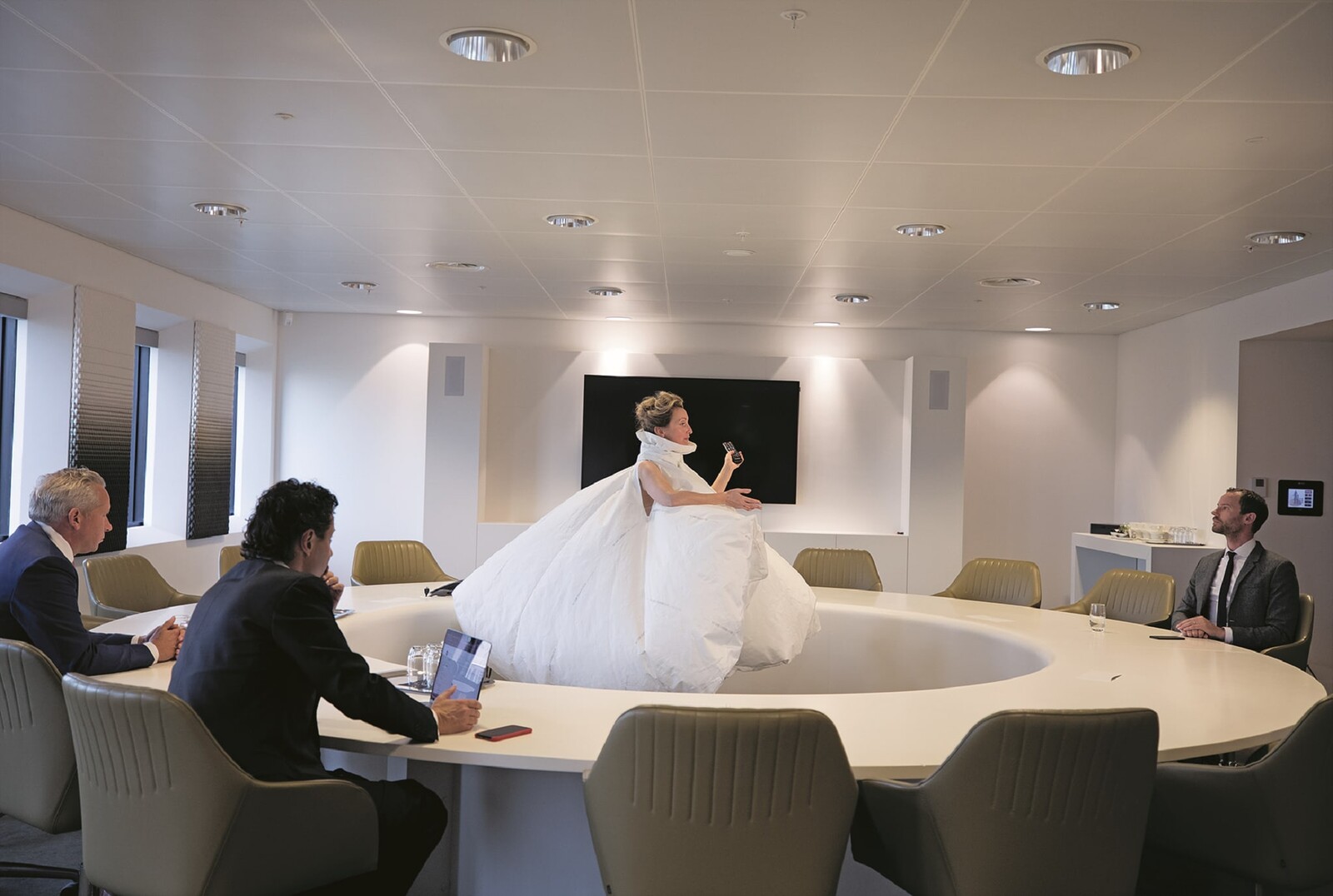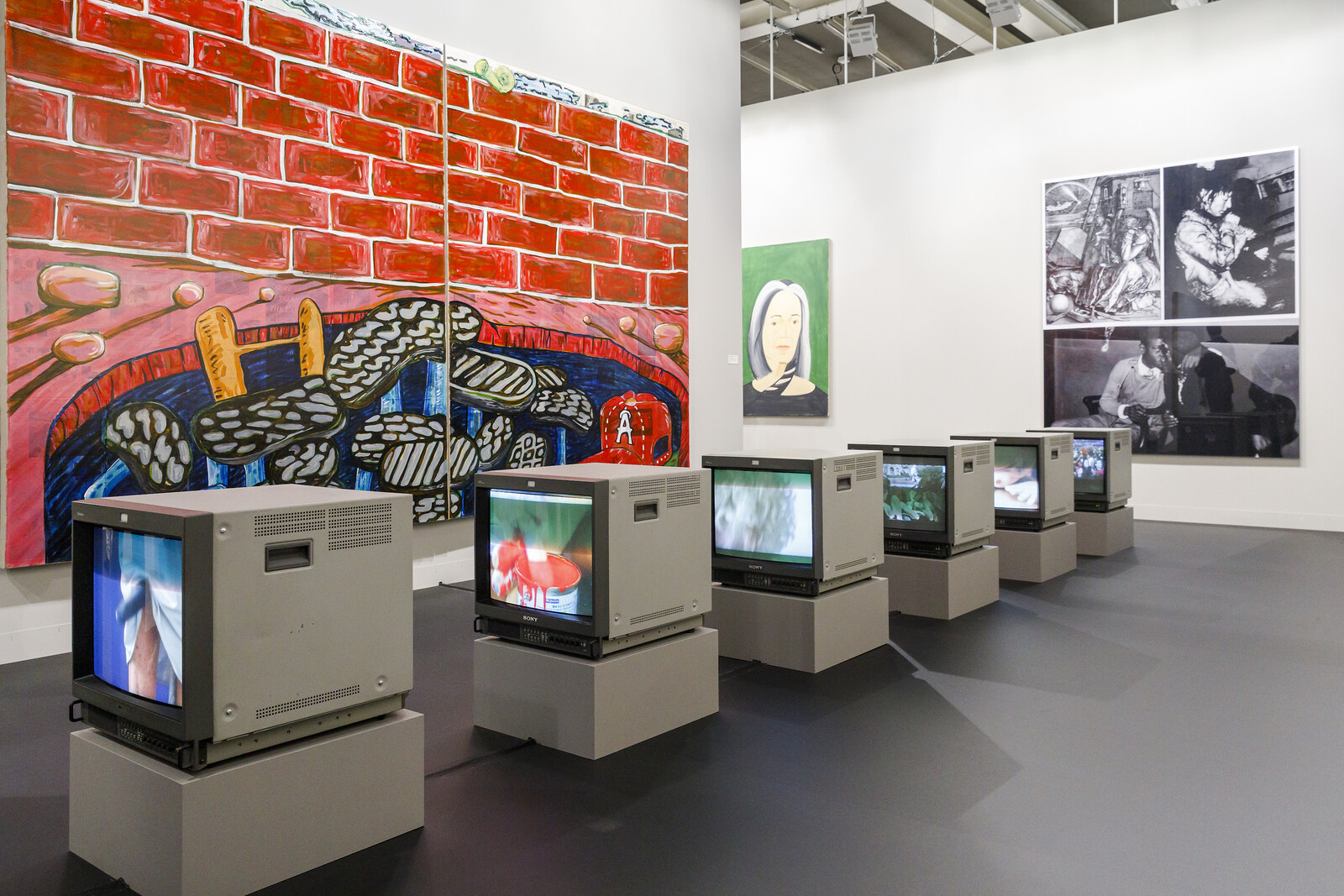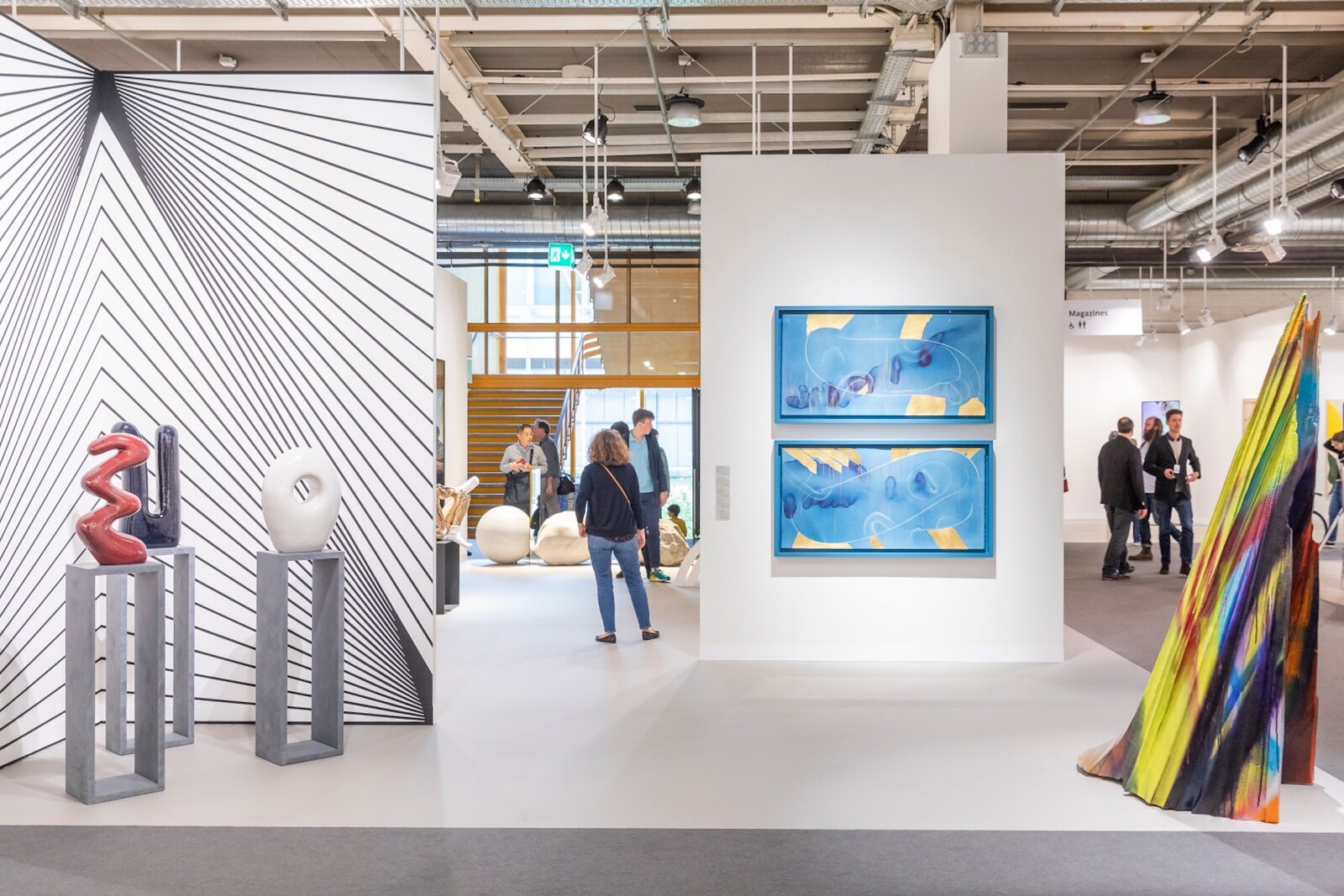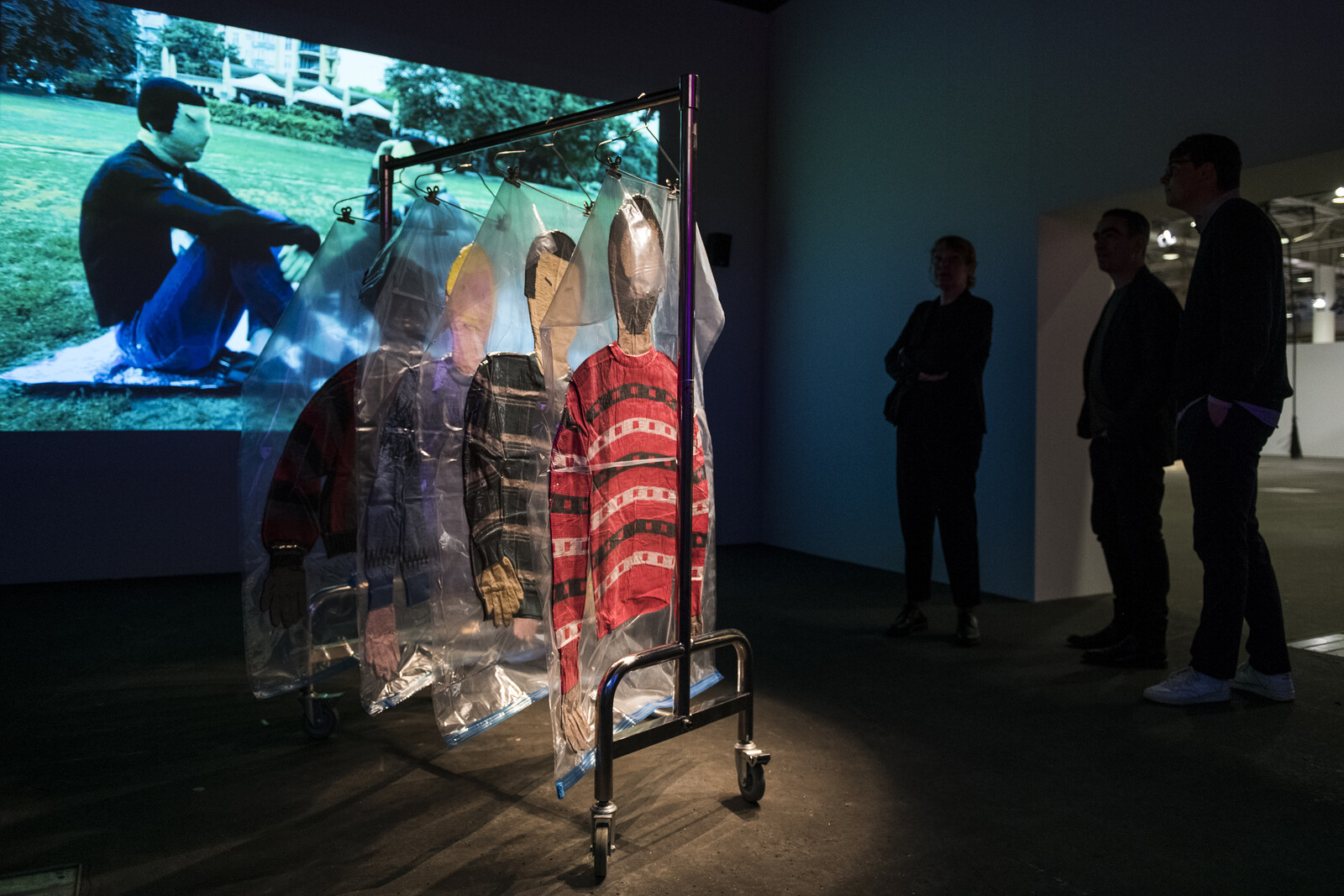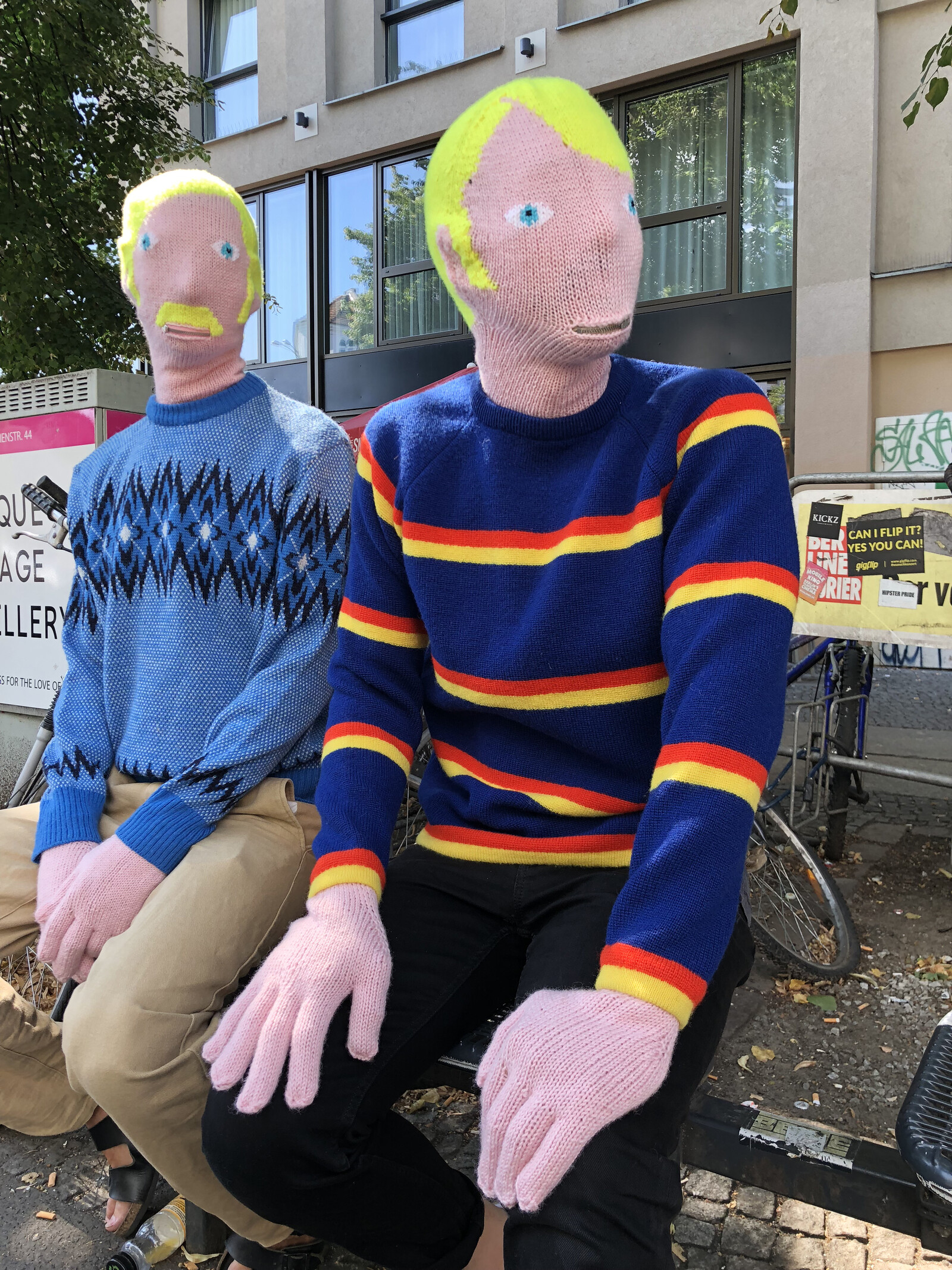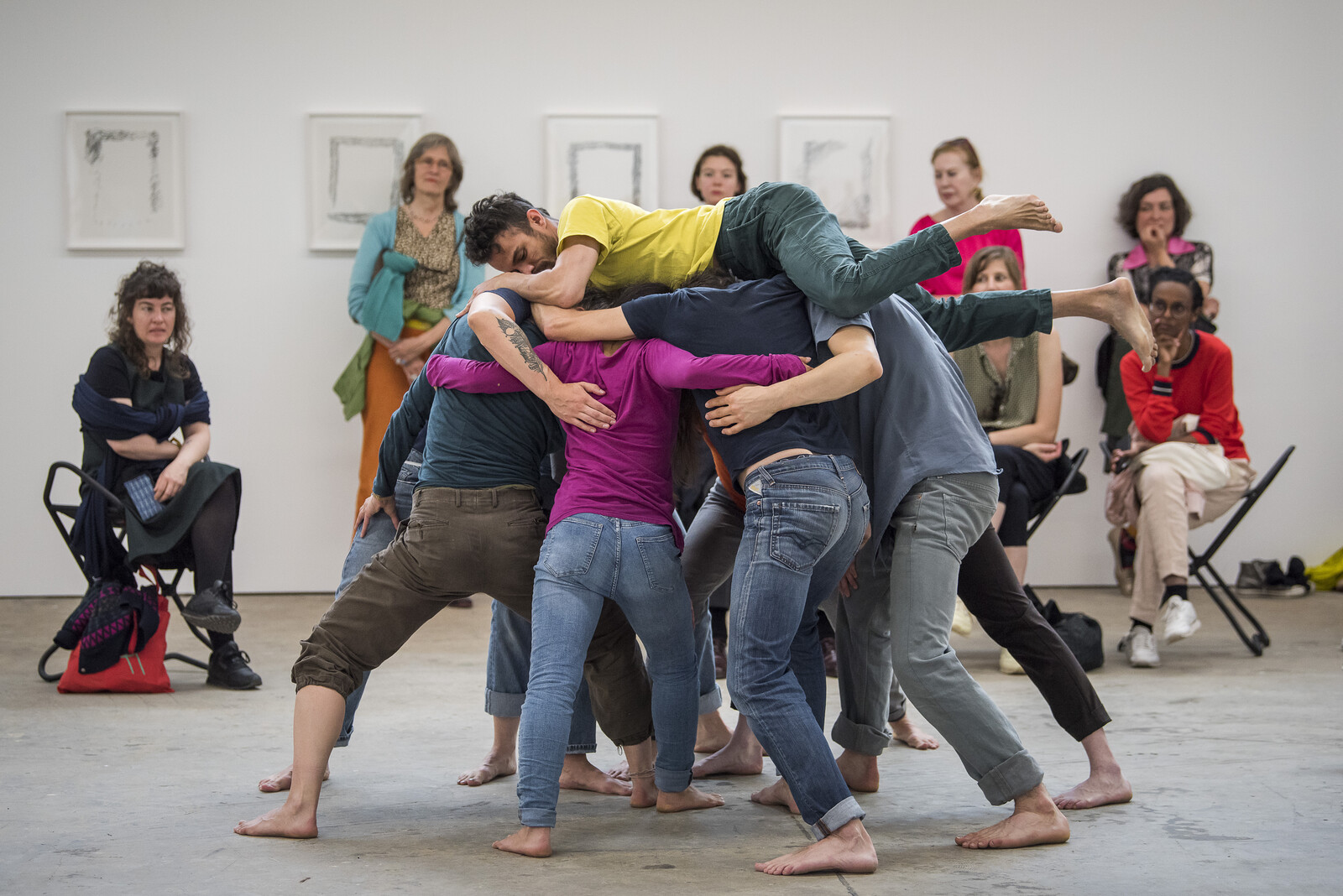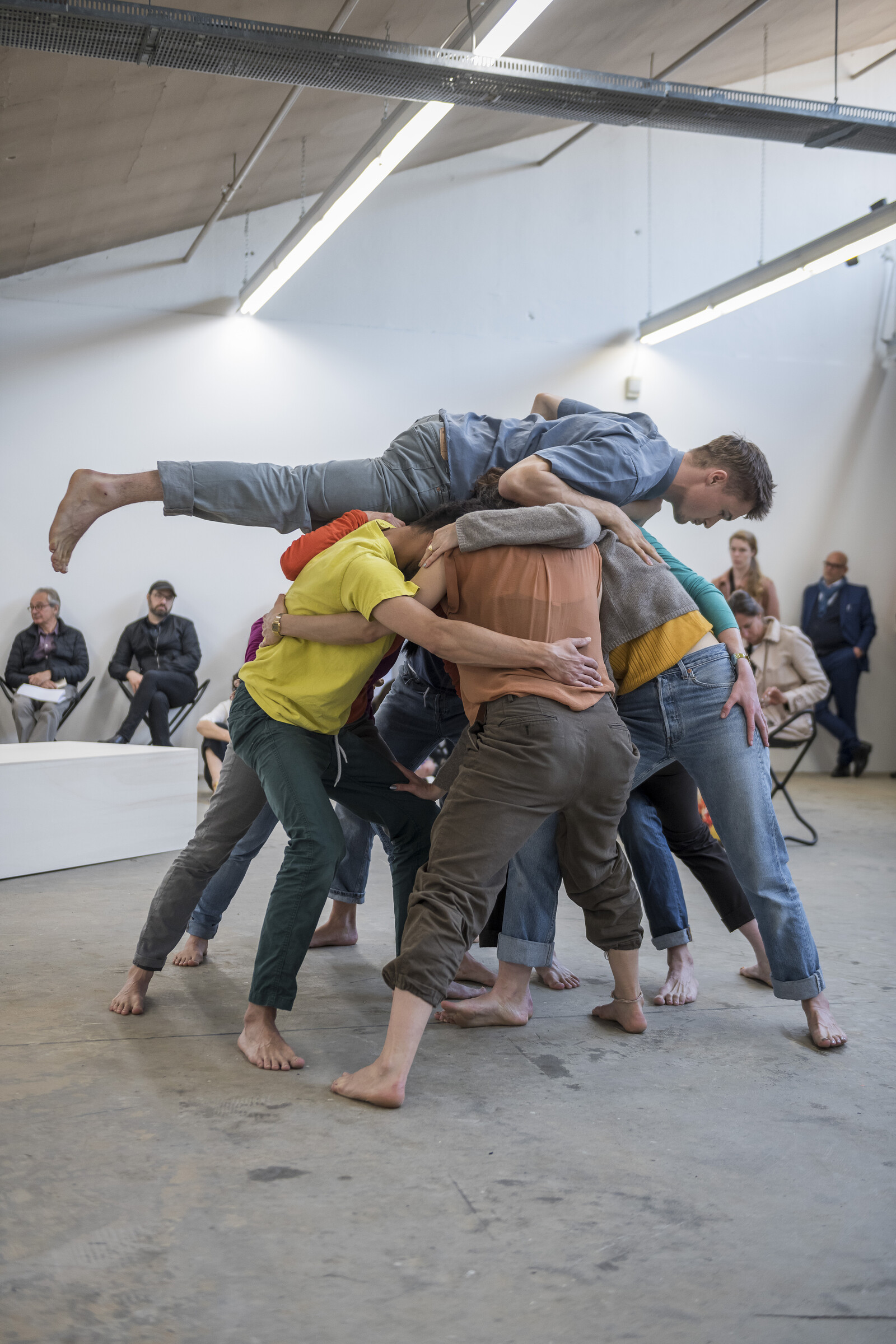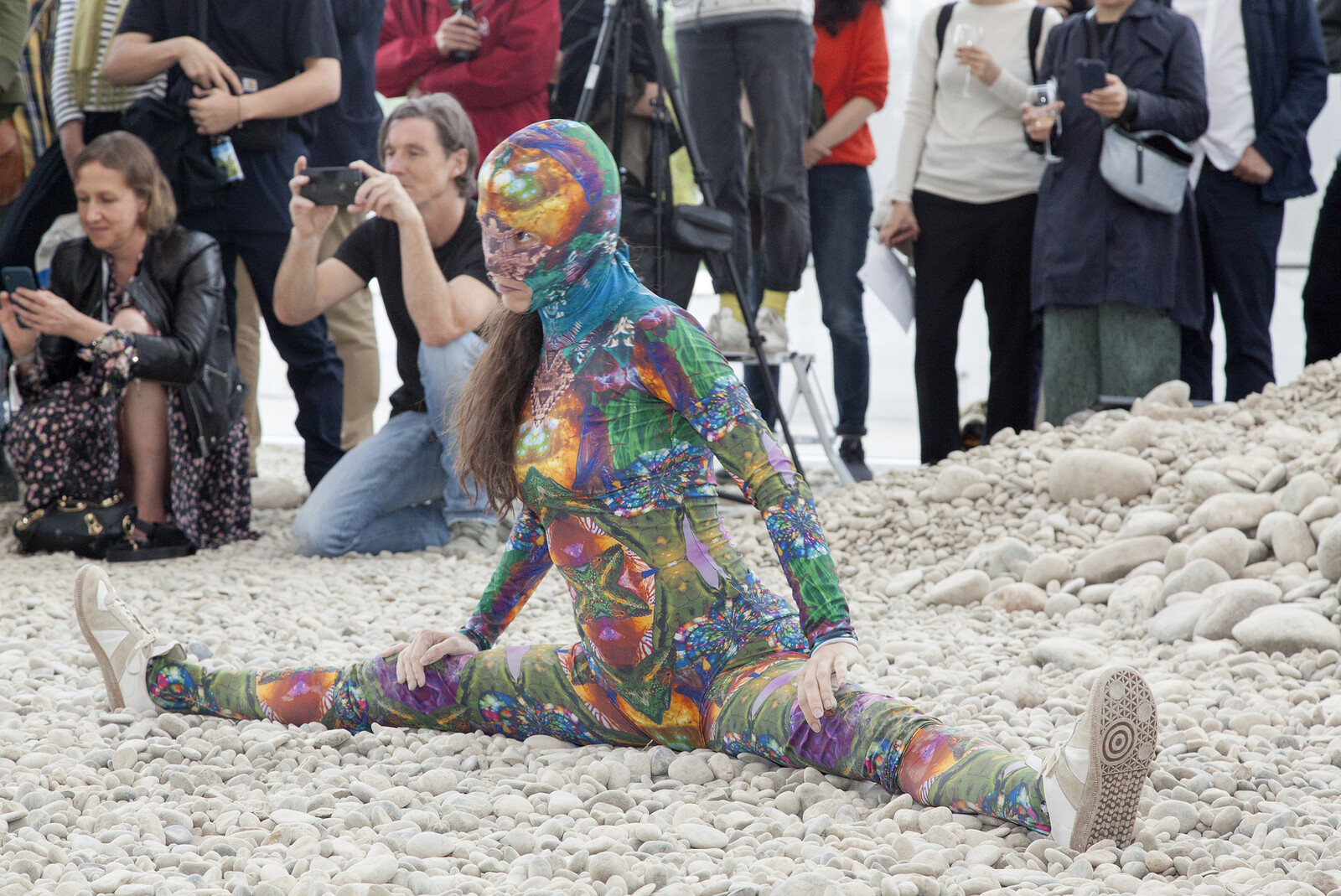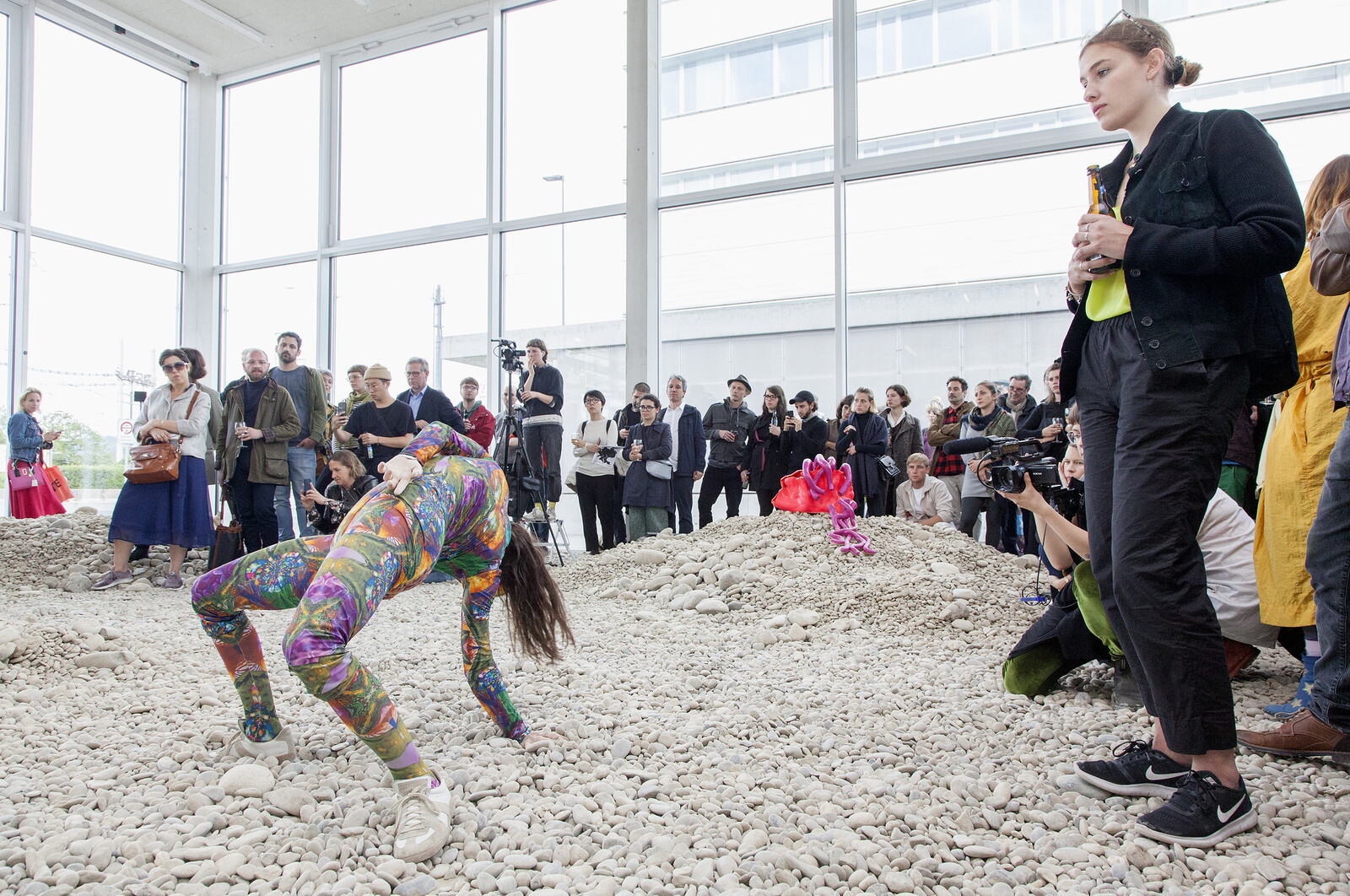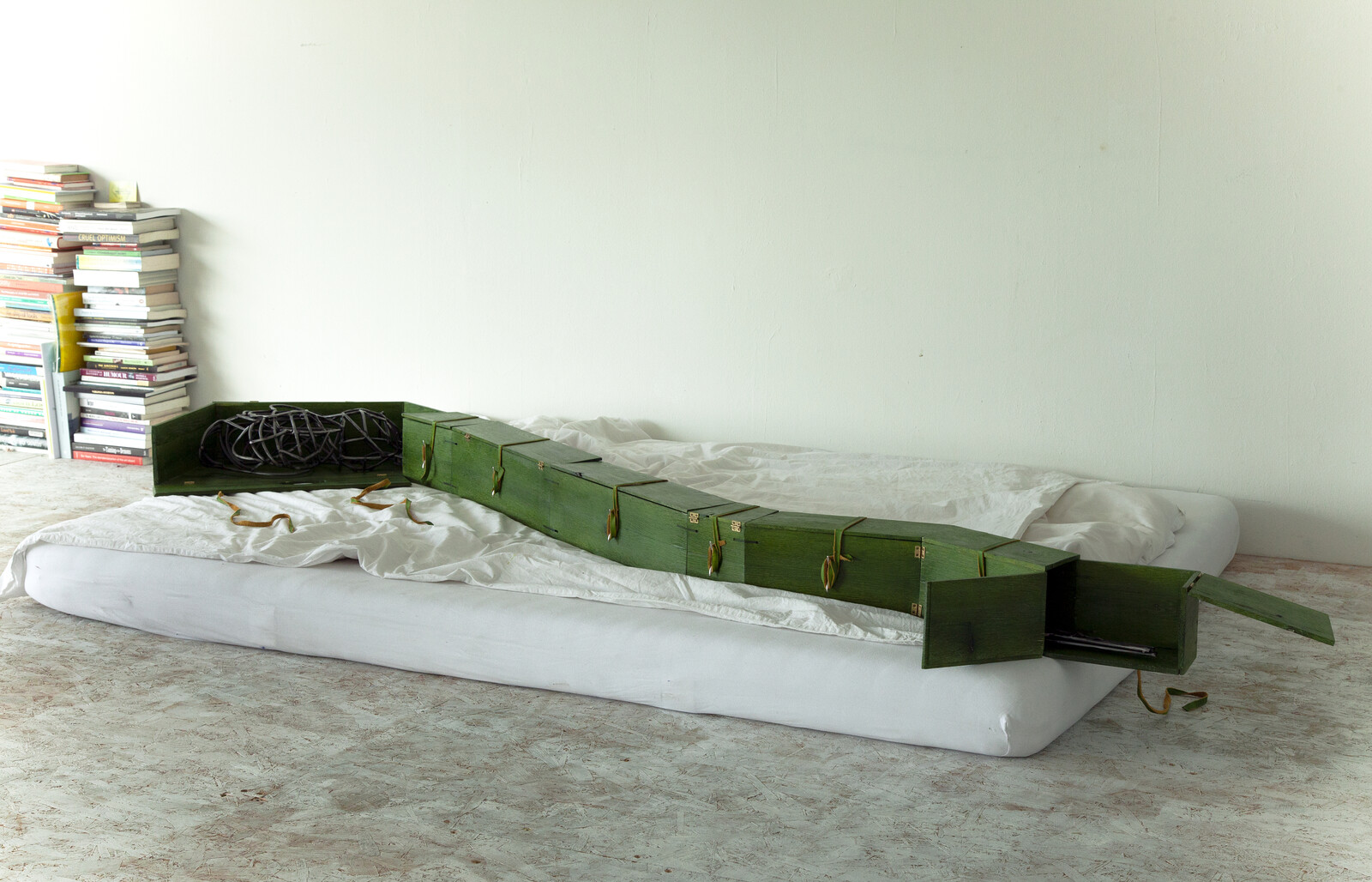Next year, Art Basel turns 50, and animals are still not allowed. There’s not even a “Pets Lounge,” as there is for kids, even though the fair’s premises are big enough to host a whole circus. Art Basel was founded in 1970, a year before Swiss women gained suffrage. Women were allowed in the fair from the very beginning, but animals will probably have to achieve parliamentary representation before the fair will welcome them. While male collectors of visual art have long been fine with consulting their wives and mistresses, they tend to ignore the taste of their pets. Probably not because they give women’s taste on visual art more importance but because it allows them to bond in placid, post-sexual ways.1 Sounds boring? That’s what non-humans must think about visual art.
Entertainment needs surprise and trust needs solidity. Visual art tries to combine both: to make a joke that works forever. All arts are polluted by this uncanny ambition, but only visual art confronts us as a permanent physical manifestation. In that sense, it shares similar traits with nationalism. Both intend to eternally occupy Earth’s limited space. Nationalism has caused far more casualties and suffering, because artworks can’t fight and procreate. But since artworks also can’t fight each other, they only need to be protected against non-art. And wherever that is, not much else is permitted. We can live in nations, but in museums, galleries, and art fairs it’s tricky. No pets allowed.
Art Basel presents itself as a fair with the solidity of an artwork. Its size and rough number of exhibitors have been fixed since 1975. Many exhibitors retain their booth every year at the same spot and keep wearing suits from the same tailor they discovered when their business took off. The different sections of the fair haven’t changed in years, nor has the beige carpet. Art Basel exerts change only in its efforts to subdue it. This year, the fair carried out two major measures of that kind. First, it introduced progressive pricing—the bigger the booth, the more expensive per square meter it gets—to subsidize smaller galleries and prevent the fair from being left to the mega players. Second, it made an effort to include more female artists. This becomes clearer in Unlimited, the curated section that features big sculptures, installations, and videos. Centerpieces at the entrance and in the middle of the section were by women. A concern for women’s rights was underlined by Andrea Bowers’s Open Secrets Part I & II (2018–19), a monumental documentation of cases of sexual misconduct revealed by the #MeToo movement; a huge sculpture by Coco Fusco that ridicules Donald Trump as the Tin Man of the Twenty-First Century (2018); and LifeDress (2018), outfits by Alicia Framis made from partly inflatable airbag fabric to protect women against physical harassment.
It’s moving to see wealthy men in their “best age” voluntarily sitting on the office chairs in Bowers’s installation to read about the wrongdoings of their kind—but for Art Basel, it’s about catching up with last year’s news. You can’t help but foresee next year’s focus on climate change. Just as you can project the steps the fair will undertake to keep attracting young and risk-taking galleries: offer them a completely free booth, or even help with the shipping.
When companies discount products, they usually do so to expand their buyers. When they do it to keep existing buyers, it indicates serious problems. In recent years, it was commonplace in the art world to lament how expensive art fairs were, how they enforced restlessness and superficiality. Now, you can already sense how the art world will lament their demise: art fairs, oh, that’s where all of us—rich, poor, young, old, powerful, powerless—used to hang out and get wasted together, where things were still utterly international, where we weren’t ruled by social-media algorithms but experienced truly random encounters.
It’s unlikely that art fairs will disappear completely. They’ll survive on a smaller and more improvised scale, like the new, neat Basel fair June, or under the umbrella of an auction house or a bigger spectacle such as the Swiss ski season. The cultural significance of art fairs will come to resemble that of a fair for handicrafts, comics, or used vinyls. But there is no way back to the olden days. Rather than slowing things down and lessening the commercial pressure, the art world could become even more of a place where rich gallerists and curators exhibit rich artists whose art is then analyzed by rich academics. Such a scenario is usually regarded as a plutocratic nightmare. But if we project the general development of human enrichment into the future and combine it with the demand for universal basic income, then art only by and for the rich could be the cultural avant-garde of a world where no one has to work. Sounds boring? In many countries pop music is dominated by members of the population who are strongly discriminated against elsewhere in society. For white middle-class teenagers, the issues and attitudes of their kind are all too lame.
The growing mass appeal of contemporary visual art in recent decades was due to the fact that it allowed the white middle class to express themselves with some immediacy—avoiding the rigid patterns of pop and TV or the tiring length of a novel and, even more, avoiding the corporate structure of publishers and record and production companies. But today art has to compete with the immediacy of social media, which absorbs art’s vital aspects and leaves it an empty shell.
Before the art market was hit by its last big crisis at the end of the 1980s, being an artist was as uncool as you could get. Artists were those with paint and stains of red wine on their clothes—too dumb, lazy, and stupid for any proper endeavor. Some artists got rich and famous by selling colorfully smeared-up paintings to the nouveau riche, but with the first glimpse of a recession, the market collapsed. The future was about to happen in cyberspace, not on the walls of the wealthy.
In the 1990s, the art world was resurrected, not because it had found a compelling answer to VR—like subjectivism and abstraction to photography a hundred years ago—but because the VR revolution was a long time coming. All that was needed to make art look fresh again was to put more emphasis on new media and product design and respond to current socio-political topics. Thirty years later, VR is a reality and art will only regain its relevance if it offers new experiences that are fundamentally different from those in VR. So far, art has been mainly about looking, and in that respect VR is catching up quickly. Just as photography prompted art to move away from concrete representation, art is now forced to move away from visuality altogether—toward touch, smell, and taste. Art has to overcome its fixation on the fixed. It’s so much greater to touch what is alive and to taste what can be swallowed.
Post-visual art is in its very beginnings. Conventional performance and participatory art keep you mostly in the comfort zone of the “distance senses”: seeing and hearing. Post-visual art gets intimate: feeling uncomfortable and ridiculous is part of the initiation. Just as abstract art found inspiration in traditional, non-Western art, post-visual art will relate to tribal rituals. It will develop new models of interacting with the world that contest any kind of exclusive ownership.
The Art Basel week offered some glimpses of this new reality. At Unlimited, Marc Brandenburg put a couple of Camouflage Pullovers (2018) on a rack: knitted sweaters that cover wearer’s hands and faces with hands and faces in different skin colors. At her Kunsthaus Baselland retrospective exhibition, Simone Forti presented her famous performance piece Huddle (1961), in which a group of people lean against and crawl upon one another in ever-changing ways. In Institut Kunst’s Der Tank, choreographer Cecilia Bengolea ended her dance piece Oneness (2019) by inviting the audience to join her in a dizzying Sufi dance on a dry, rocky seabed. For her exhibition project Rheum, artist Cassidy Toner takes a more casual approach to post-visual art. For the last year, she has been sharing her bed with specially commissioned artworks. This time, Chris Domenick and Em Rooney fabricated sleep when you’re dead: a slim coffin for a snake-like iron skeleton that meanders diagonally over Toner’s king-size mattress. Her romantic partners and little street dog somehow manage to fit in. Bridging visual and non-visual art, Toner explores how conventional, object-oriented art can also be perceived intimately, without wasting any space.
Note: Ingo Niermann’s own project, Army of Love, might fulfill the criteria for non-visual art. His wife, Chus Martínez, is head of Institut Kunst and curated Cecilia Bengolea’s Oneness at Der Tank. Cassidy Toner is a former master student at Institut Kunst whom he mentored occasionally.
